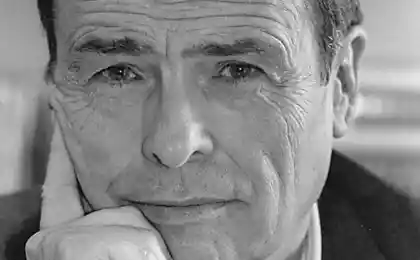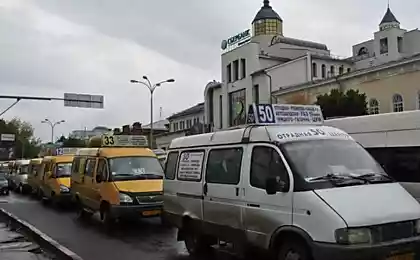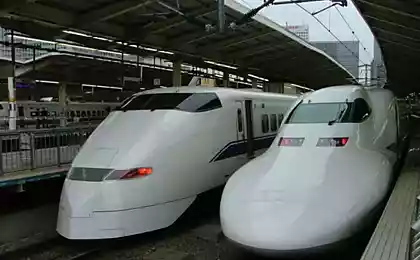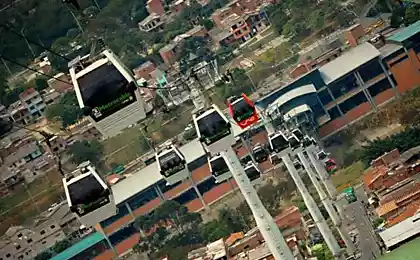983
We offer an overview of the most expensive public transport systems.
Of course, good to drive around the city in their own cars with air conditioning, but still the majority of residents use public transport. The reasons can be many - from economic to environmental, but buses, trams and metros are unlikely to ever disappear from the streets. Although the price of the trip can be quite biting. We offer an overview of the most expensive public transport systems. Perhaps the price of a ticket does not seem fabulous, but if you have to travel a lot, then this will result in a decent amount.
Munich, Germany - fare is $ 3.24
Munich - the third most populous city in Germany. Here is the popular Oktoberfest. It is not surprising that the transport system is extremely well developed. It consists of commuter trains, suburban-urban train (S-Bahn), subway, metro and trams. Built in 1972, the system S-Bahn serves 800 thousand daily passengers. Throughout the city there are 10 stations. System U-Bahn, built a year earlier in the day carries more than a million people. This suggests that more than half of the residents of Munich daily by public transport.
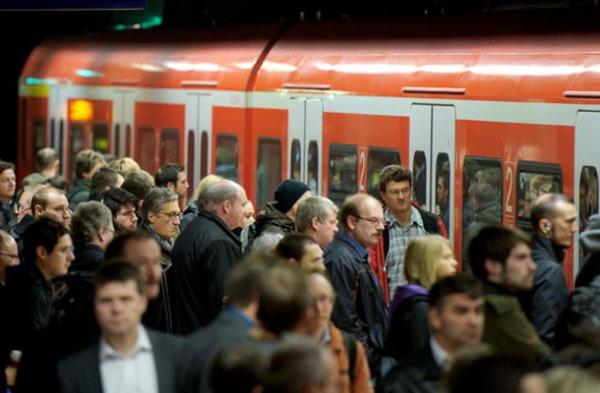
Frankfurt, Germany - fare is $ 3.24
The population of the fifth largest city in Germany is 700 thousand people. Its transport system consists of S-Bahn, U-Bahn and nine tram lines. The most popular form - trams, which reach speeds up to 140 km / h.
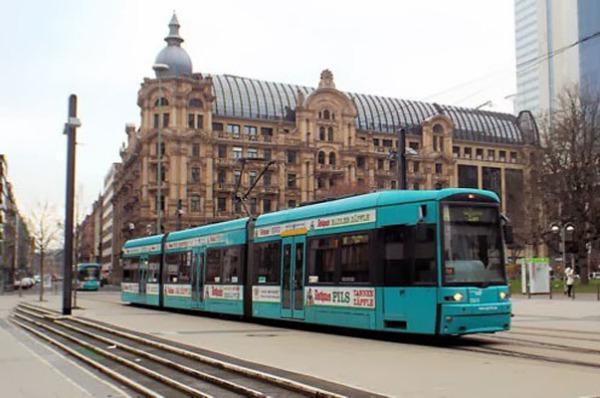
Helsinki, Finland - fare is $ 3.28
The population of Helsinki, 610 000 people, so there is the ramified transport system, consisting of trams, trains, metro, bus and ferry services. Helsinki - the only city in Finland with trams and subway, which was built in 1982.

Sydney, Australia - fare $ 3.43
Sydney - the only non-European city, caught in a list. It is the largest city in the country, its passenger traffic is 522 million. Extended transport system consists of buses, trains and water transport. Oddly enough, but the transport system of the city is one of the worst in the world.
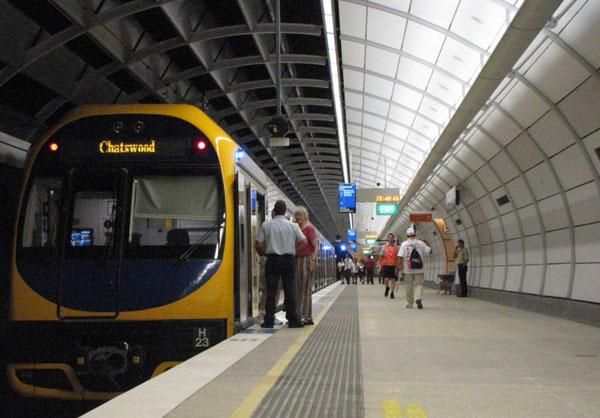
Geneva, Switzerland - fare is $ 3.67
The population of Geneva, only about 200 thousand, yet it boasts one of the most complex and rapidly developing transport systems in Western Europe. The public transport system includes trams, trolleys and buses. Since 2008, it has six tram lines, 38 local and international bus routes, 12 night routes. One bus can accommodate up to 150passazhirov. By 2015, the planned introduction of tram routes, and by 2020 the increase in mobility of 40%.

London, England - fare is $ 3.70
London's transport system is one of the most complex and busiest in Europe. London Underground serves not only capital, but also the county of Buckinghamshire, Hertfordshire and Essex. In 2012-2013, there were 270 stations, passenger traffic amounted to 1, 23 billion. Weekly ridership known worldwide London buses - 6 million.
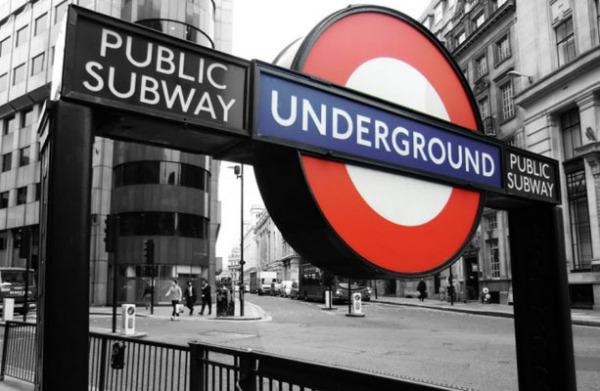
Zurich, Switzerland - fare is $ 4.66
The population of the largest city in Switzerland is about two million people. The public transport system extremely developed, since it has to cover not only the city. It consists of the S-Bahn, trams and buses that can still be called a trolley, because they both diesel and electric. In addition, there is a funicular railway and river transport. More than 70% of the population uses the rail and bus transportation.

Copenhagen, Denmark - fare is $ 4.88
Copenhagen transport system so thoroughly that attracted the attention of the whole of Europe. It consists of a main railway line, commuter train, subway, bus and river transport. The Danish capital in 2013 broke the record for passenger traffic, increasing it to 2, 2 million people. This is 50% more than the European average.
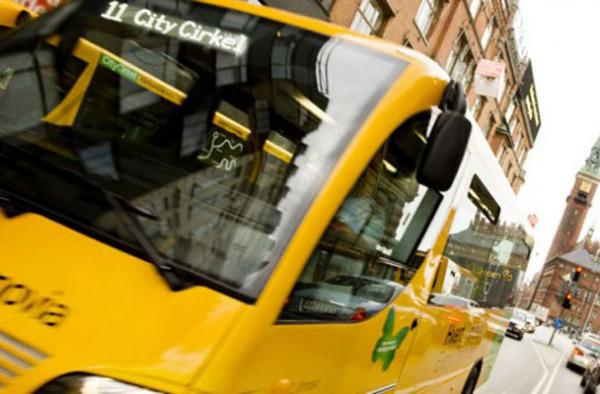
Oslo, Norway - fare is $ 5.12
In Oslo, it is the high cost of public transport. Six subway lines, six tram lines, eight lines of electric trains enough to provide full life of the city.
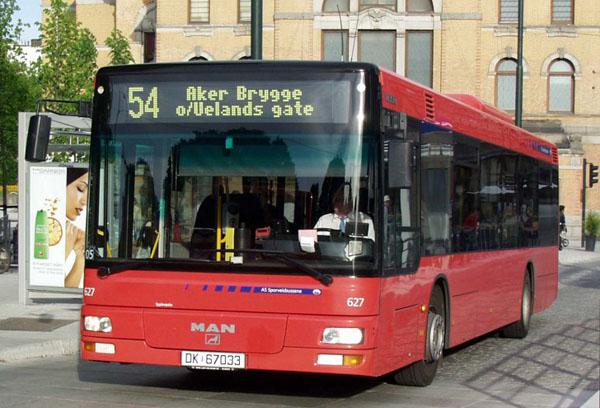
©
Munich, Germany - fare is $ 3.24
Munich - the third most populous city in Germany. Here is the popular Oktoberfest. It is not surprising that the transport system is extremely well developed. It consists of commuter trains, suburban-urban train (S-Bahn), subway, metro and trams. Built in 1972, the system S-Bahn serves 800 thousand daily passengers. Throughout the city there are 10 stations. System U-Bahn, built a year earlier in the day carries more than a million people. This suggests that more than half of the residents of Munich daily by public transport.

Frankfurt, Germany - fare is $ 3.24
The population of the fifth largest city in Germany is 700 thousand people. Its transport system consists of S-Bahn, U-Bahn and nine tram lines. The most popular form - trams, which reach speeds up to 140 km / h.

Helsinki, Finland - fare is $ 3.28
The population of Helsinki, 610 000 people, so there is the ramified transport system, consisting of trams, trains, metro, bus and ferry services. Helsinki - the only city in Finland with trams and subway, which was built in 1982.

Sydney, Australia - fare $ 3.43
Sydney - the only non-European city, caught in a list. It is the largest city in the country, its passenger traffic is 522 million. Extended transport system consists of buses, trains and water transport. Oddly enough, but the transport system of the city is one of the worst in the world.

Geneva, Switzerland - fare is $ 3.67
The population of Geneva, only about 200 thousand, yet it boasts one of the most complex and rapidly developing transport systems in Western Europe. The public transport system includes trams, trolleys and buses. Since 2008, it has six tram lines, 38 local and international bus routes, 12 night routes. One bus can accommodate up to 150passazhirov. By 2015, the planned introduction of tram routes, and by 2020 the increase in mobility of 40%.

London, England - fare is $ 3.70
London's transport system is one of the most complex and busiest in Europe. London Underground serves not only capital, but also the county of Buckinghamshire, Hertfordshire and Essex. In 2012-2013, there were 270 stations, passenger traffic amounted to 1, 23 billion. Weekly ridership known worldwide London buses - 6 million.

Zurich, Switzerland - fare is $ 4.66
The population of the largest city in Switzerland is about two million people. The public transport system extremely developed, since it has to cover not only the city. It consists of the S-Bahn, trams and buses that can still be called a trolley, because they both diesel and electric. In addition, there is a funicular railway and river transport. More than 70% of the population uses the rail and bus transportation.

Copenhagen, Denmark - fare is $ 4.88
Copenhagen transport system so thoroughly that attracted the attention of the whole of Europe. It consists of a main railway line, commuter train, subway, bus and river transport. The Danish capital in 2013 broke the record for passenger traffic, increasing it to 2, 2 million people. This is 50% more than the European average.

Oslo, Norway - fare is $ 5.12
In Oslo, it is the high cost of public transport. Six subway lines, six tram lines, eight lines of electric trains enough to provide full life of the city.

©
